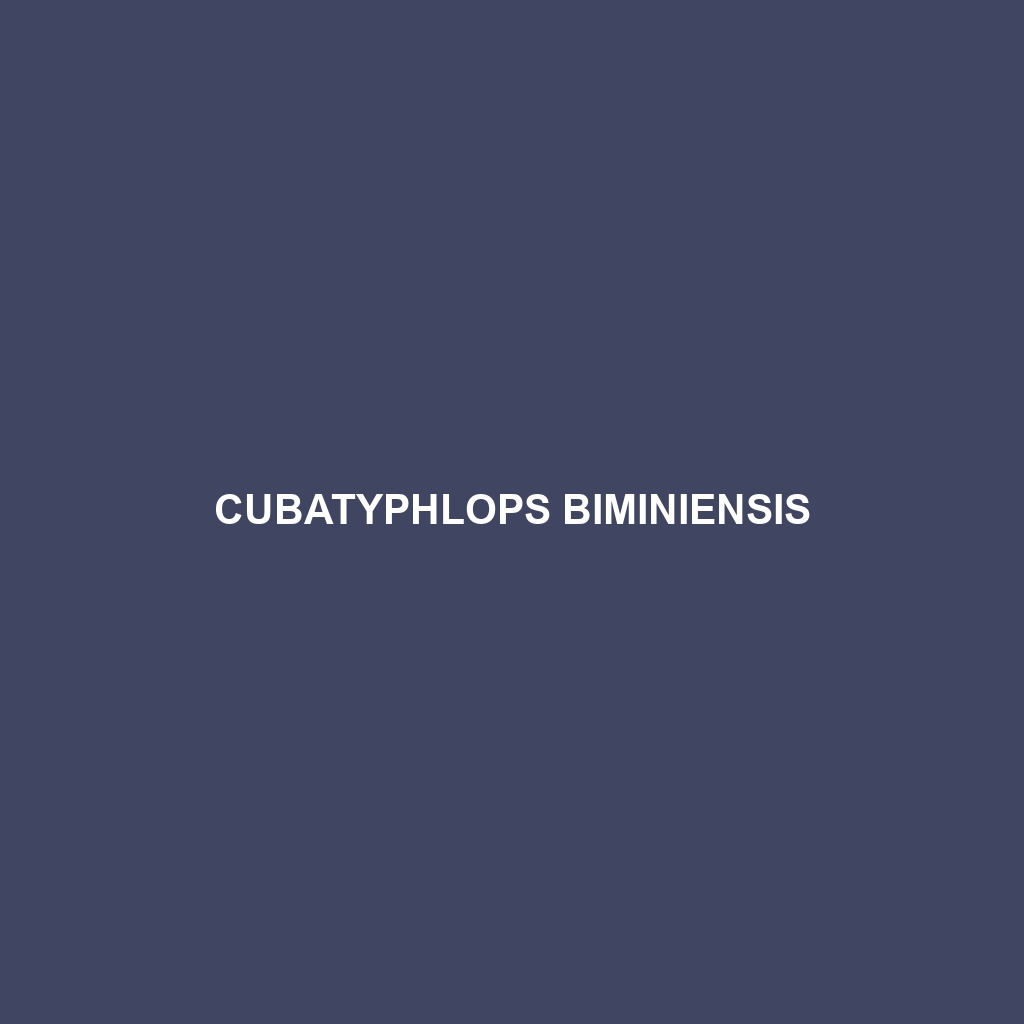Species Description: Cubatyphlops biminiensis
Common Name: Cubatyphlops biminiensis
Scientific Name: Cubatyphlops biminiensis
Habitat
Cubatyphlops biminiensis is primarily found in the Caribbean region, specifically in the islands of the Bahamas and nearby locations. This species thrives in subtropical and tropical dry forests, utilizing leaf litter and sandy soils as burrowing sites. The warm, humid environments are ideal for their underground lifestyle, creating a suitable habitat that supports their needs.
Physical Characteristics
This snake species typically reaches lengths of 30 to 45 centimeters (12 to 18 inches). Its coloration ranges from a light yellowish-brown to dark brown, often presenting a lighter ventral side. The cylindrical body shape and relatively small eyes, which are covered by scales, are distinctive characteristics of Cubatyphlops biminiensis. Additionally, this species exhibits a smooth skin texture, contributing to its ability to navigate through soil effortlessly.
Behavior
Cubatyphlops biminiensis is primarily a fossorial or underground dwelling species. It is known for its secretive nature, spending most of its life burrowed in the soil to escape predators and search for food. Its behavior includes frequent movement through moist soil, where it utilizes its specialized head to navigate and burrow. This species is mostly nocturnal, coming out at night to forage.
Diet
The diet of Cubatyphlops biminiensis predominantly consists of small invertebrates, such as ants, termites, and larvae. These snakes play a vital role in controlling insect populations. They have developed an impressive feeding adaptation, allowing them to consume their prey by utilizing a unique jaw structure to grasp and swallow small creatures whole.
Reproduction
Cubatyphlops biminiensis typically breeds from late spring to early summer. The females lay eggs in concealed burrows, offering protection for their offspring. Clutch sizes can range from 3 to 10 eggs, depending on the age and size of the female. The eggs hatch within 6 to 8 weeks, and the young snakes exhibit independence immediately after hatching, relying on their innate hunting skills for survival.
Conservation Status
Currently, Cubatyphlops biminiensis is classified as vulnerable due to habitat loss and degradation caused by urban development and agricultural expansion. Its limited geographic range makes it particularly susceptible to environmental changes and the introduction of invasive species, underscoring the need for conservation efforts to protect this unique serpent.
Interesting Facts
One fascinating aspect of Cubatyphlops biminiensis is its ability to sense vibrations and chemical cues in the soil, allowing it to navigate effectively and locate prey without relying heavily on vision. This adaptation enhances survival in its predominantly underground habitat.
Role in Ecosystem
Cubatyphlops biminiensis plays a crucial role in its ecosystem as a predator of small invertebrates, thus contributing to natural pest control. Its burrowing behavior also aerates the soil, promoting nutrient cycling and enhancing plant growth in its habitat. The species interacts with other members of the ecosystem, helping maintain the balance within its ecological niche.
